Container Shipping for Cars: What You Need to Know
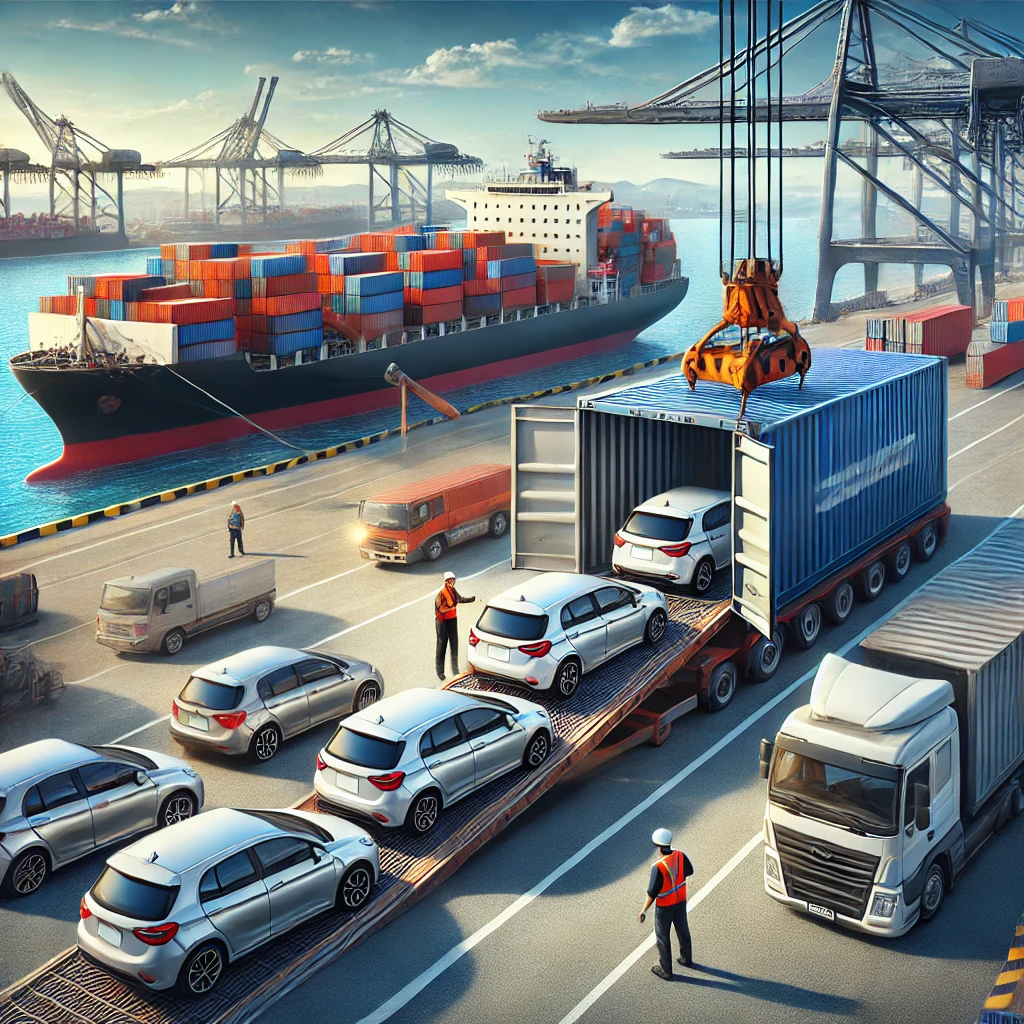
Understanding Container Shipping for Cars
Container shipping involves loading vehicles into standard shipping containers for transport by sea, rail, or road. This method offers several advantages over traditional roll-on/roll-off (RoRo) shipping, including enhanced protection from the elements and reduced risk of damage during transit.
Types of Containers Used for Car Shipping
- 20-foot container: Can typically fit one standard-sized car
- 40-foot container: Can accommodate two to three cars depending on size
- 40-foot high cube container: Offers additional height, useful for larger vehicles
- Custom car racks: Specialized equipment to maximize space and secure vehicles
Benefits of Container Shipping for Cars
- Enhanced Protection: Cars are shielded from weather, salt air, and potential damage during handling
- Increased Security: Reduced risk of theft or tampering
- Flexibility: Suitable for a wide range of vehicle types, including classic or luxury cars
- Cost-Effective for Multiple Vehicles: Can be economical when shipping several cars together
- Door-to-Door Service: Often available for complete point-to-point transportation
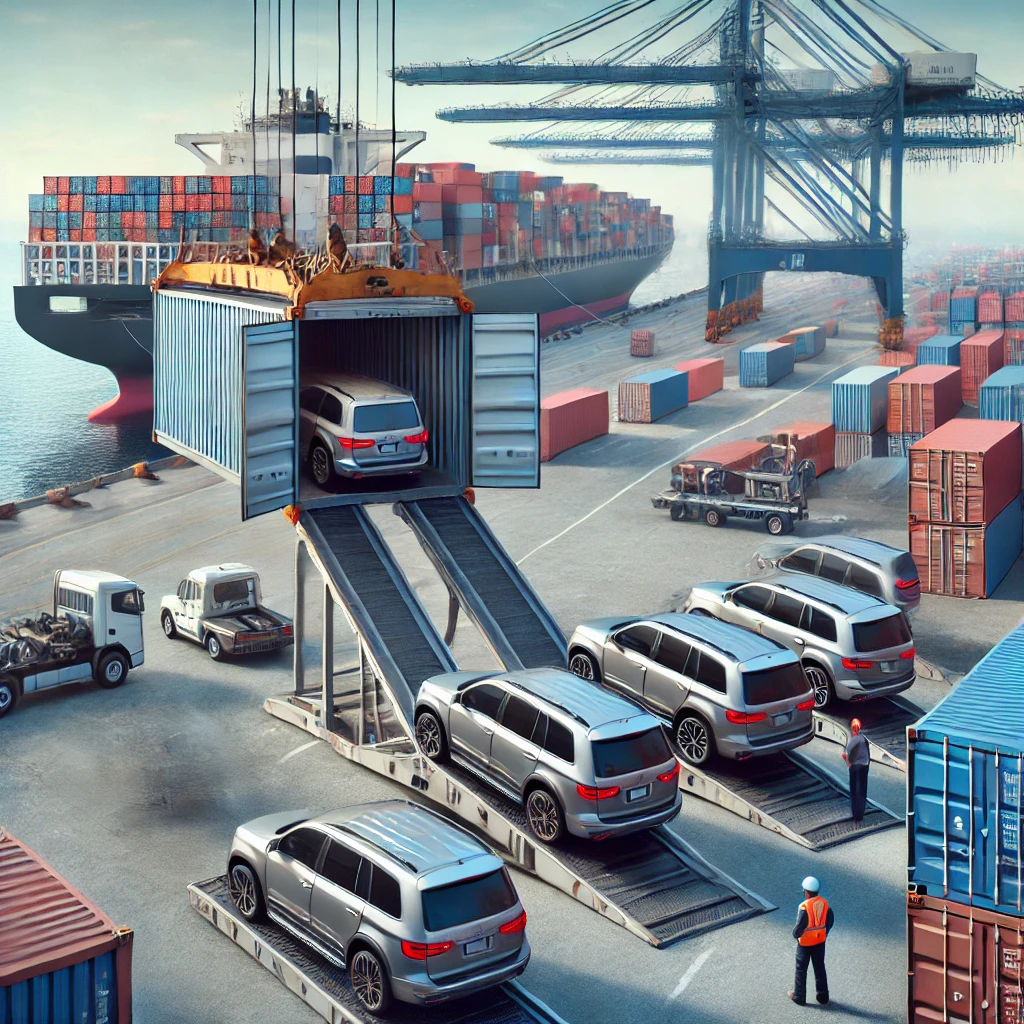
Challenges of Container Shipping for Cars
- Higher Cost for Single Vehicles: Can be more expensive than RoRo shipping for individual cars
- Limited Access During Transit: Once loaded, cars are inaccessible until the container is opened
- Potential for Damage if Improperly Loaded: Requires expertise in loading and securing vehicles
- Longer Transit Times: May take longer than other shipping methods due to container handling processes
Preparing Your Car for Container Shipping
- Clean the Vehicle: Thoroughly wash and vacuum the car
- Document the Condition: Take detailed photos and notes of any existing damage
- Remove Personal Items: Clear the car of all personal belongings
- Secure Loose Parts: Ensure all removable parts are properly secured or removed
- Check Fluid Levels: Ensure proper levels of oil, coolant, and other fluids
- Battery Preparation: Disconnect the battery or ensure it’s fully charged for long journeys
- Tire Inflation: Inflate tires to the proper pressure
- Reduce Fuel Level: Keep the gas tank only about a quarter full
The Container Loading Process
- Inspection: The car is thoroughly inspected and its condition documented
- Driving or Winching: The vehicle is carefully driven or winched into the container
- Securing: The car is secured using straps, wheel chocks, and other restraints
- Sealing: The container is sealed for security
Choosing a Container Shipping Service
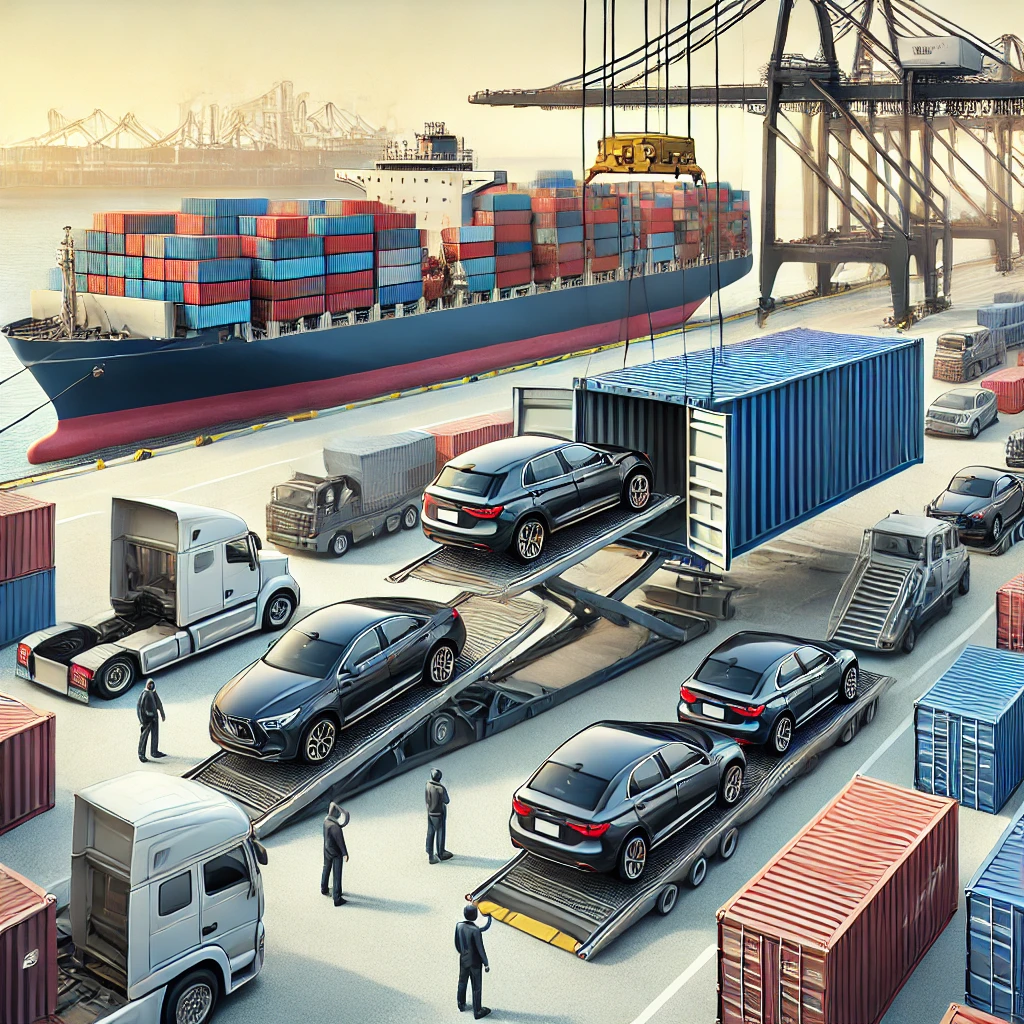
When selecting a provider for container car shipping, consider:
- Experience: Look for companies with specific experience in auto transport
- Insurance Coverage: Ensure adequate insurance is provided for your vehicle’s value
- Tracking Capabilities: Real-time tracking can provide peace of mind
- Customer Reviews: Research the company’s reputation and customer feedback
- Pricing Structure: Understand all costs involved, including any potential hidden fees
- Transit Times: Consider the estimated delivery timeframe
- Additional Services: Some providers offer services like customs clearance for international shipments
International Considerations
When shipping cars internationally in containers, be aware of:
- Customs Regulations: Each country has specific import requirements for vehicles
- Documentation: Proper paperwork is crucial for smooth customs clearance
- Duties and Taxes: Be prepared for potential import duties and taxes
- Compliance Standards: Ensure the vehicle meets the destination country’s emissions and safety standards
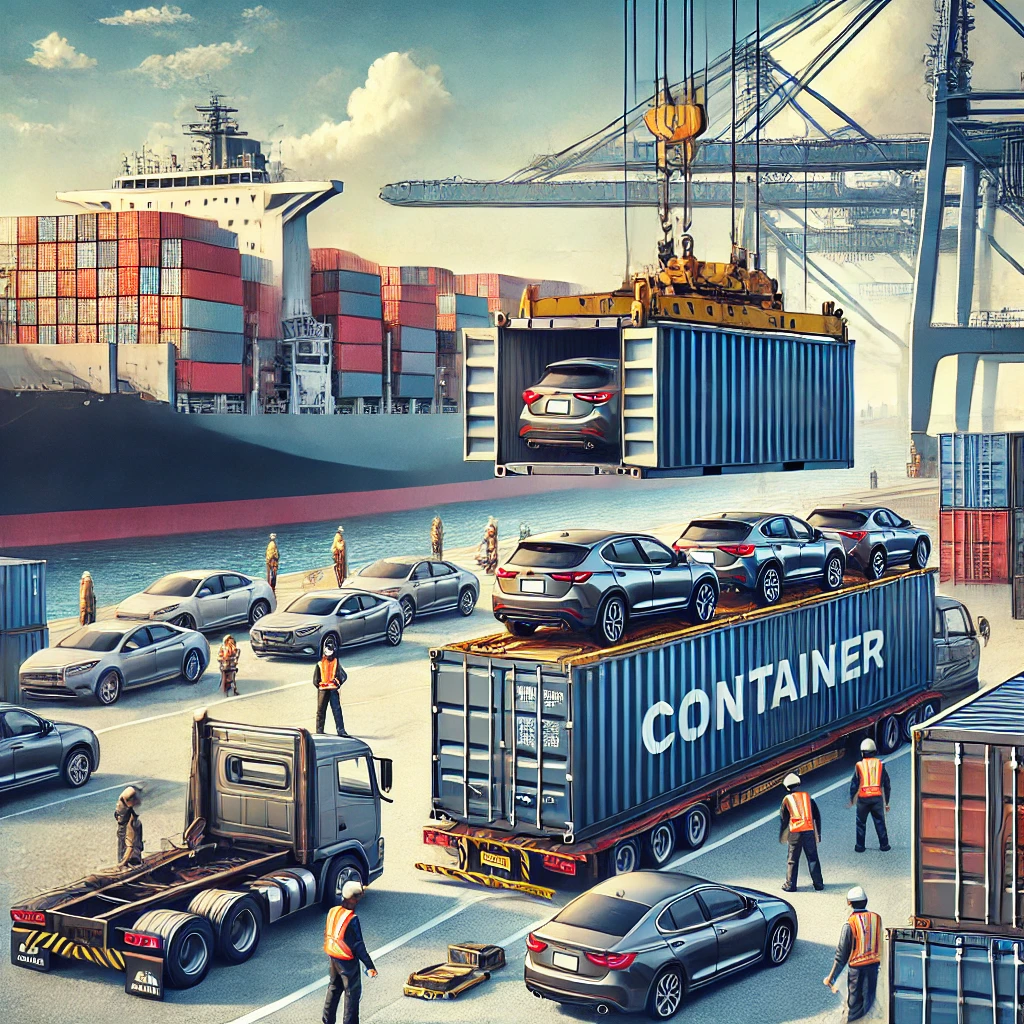
Tips for a Successful Container Car Shipment
- Plan Ahead: Container shipping can take time, so plan well in advance
- Understand the Process: Familiarize yourself with each step of the shipping process
- Communicate Clearly: Maintain open communication with your shipping provider
- Consider Additional Insurance: Extra coverage may be worthwhile for high-value vehicles
- Prepare for Delays: International shipments can face unexpected delays, so be flexible
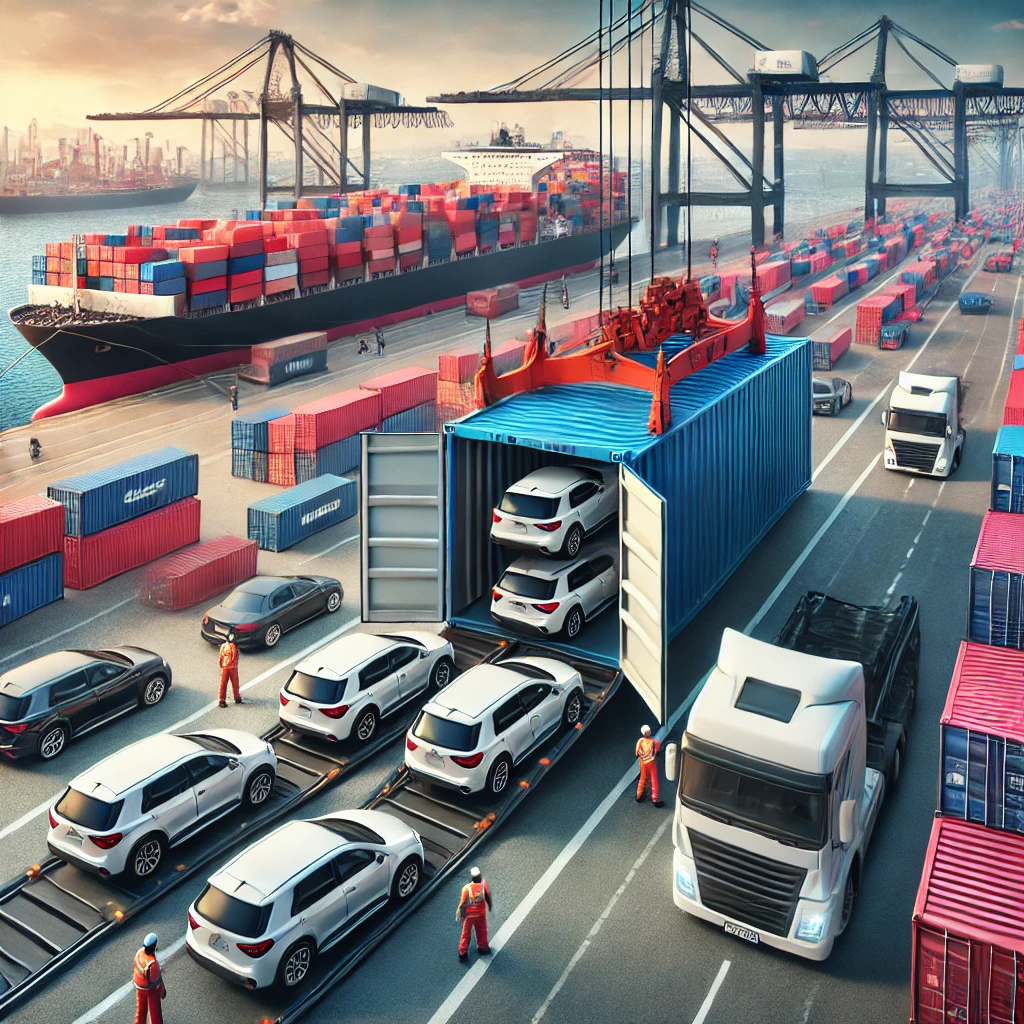
Conclusion
Container shipping offers a secure and versatile option for transporting cars, especially for long-distance or international moves. While it requires careful preparation and consideration, the benefits of enhanced protection and flexibility make it an attractive choice for many vehicle owners and businesses.
For logistics companies and car dealerships looking to streamline their container car shipping operations, Linbis offers powerful software solutions. Our platform can help manage bookings, track shipments, and optimize container utilization for car transport. To learn more about how Linbis can enhance your container shipping services for cars, contact us today for a personalized demonstration.
